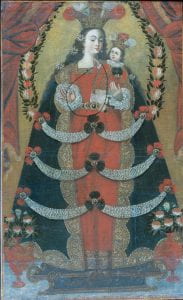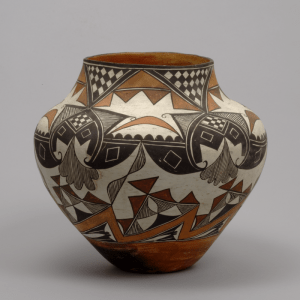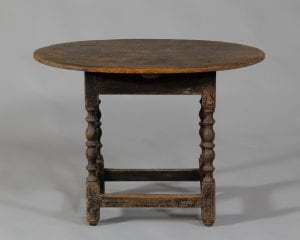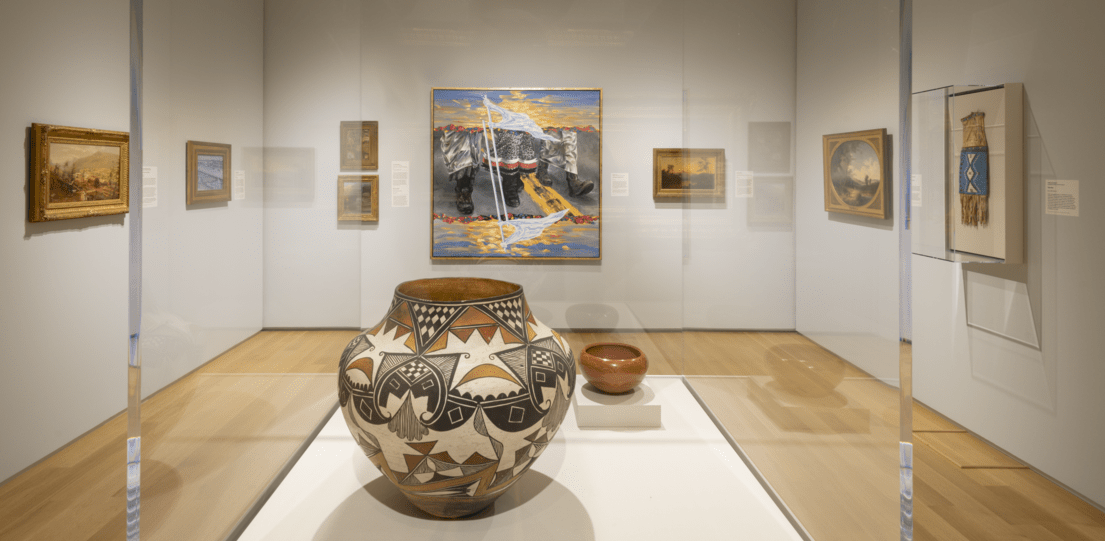If you’ve been in our galleries recently, you might have noticed that labels for artworks by unidentified artists list the maker as “artist once known” rather than the more traditional “artist unknown.” The difference is subtle but important. “Artist unknown” suggests that an artist’s identity is unimportant and unrecoverable, whereas “artist once known” implies that an artist was known and celebrated within their community.
A perfect example is Our Lady of Pomata, an 18th-century painting from Cuzco currently on view in Liquidity: Art, Commodities, and Water.

Priests and nuns commissioned thousands of religious paintings in the Spanish-colonized Americas. These artworks were painted by Spanish colonizers as well as Indigenous Andeans. Using the phrase “artist once known” on our gallery label encourages visitors to consider the many people of different backgrounds who could have been involved in this work’s creation.
We first experimented with this terminology in our 2022 reinstallation of the American art collection in the exhibition This Land: American Engagement with the Natural World. The curatorial team wanted language that acknowledged artists as individuals—people who were well respected within their communities and celebrated for their artistic talents. These “artists once known” were highly skilled even if they may currently be unknown to us today.
The invocation to consider why these artists are “once known” also helps us reckon with archival absences and challenge how archives and museums have traditionally told stories rooted in White settler colonial histories. Why is someone not known? What historical erasures or violent actions caused someone to be unknown to us today? We do not currently know the maker of many Native American artworks in our collection, including the Acoma Pueblo olla, or water jar, currently on view in the galleries.

While we may never know the artist, using “artist once known” allows for the possibility of identifying these skilled potters by collaborating with people from these communities who can share their rich oral histories to help museums better understand, steward, and interpret artworks in our care.
The Hood Museum is not the first institution to adopt this terminology, and the rephrasing has not gone unnoticed by our audiences. “Artist once known” was first used in exhibitions featuring First Nations Art at the Art Gallery of Ontario curated by Wanda Nanibush (Beausoleil First Nation). Museums across the United States and Canada have since adopted this language to remind visitors of historical erasures often tied to violent histories of colonization, the forceful removal of Indigenous people from their lands, and the institution of slavery. However, Decorative Arts curators have also adopted and used similar terminology over the past decade to discuss how furniture, ceramics, and other related pieces often have many makers.

In Liquidity we do not know the maker of an early-18th-century oval-top tea table made in the British North American colonies. This table could have been manufactured by a White or Black cabinetmaker, a person free, indentured, or enslaved. We will likely never know who sawed these boards, sanded them, and turned a lathe to carve the four legs, but using “artist once known” suggests the multiple hands that could have been involved in its production.
Changing our phrasing helps us engage with all aspects of artistic making and creation and tell more complicated, truer, and more nuanced histories. Once known, these artists worked under many different circumstances. They were highly talented and creative individuals with networks of family and friends. They contributed to their communities, sometimes laboring against outside forces beyond their control, to create these compelling objects.
To learn more about the artworks featured in this blogpost, you can visit Liquidity: Art, Commodities, and Water, on view at the Hood Museum of Art through November 2024.
This post was authored by: Michael Hartman Hood Museum Jonathan Little Cohen Associate Curator of American Art

ABOUT THE AUTHOR:
Michael Hartman joined the Hood Museum of Art in September 2021. He holds a BA in art history and German from the University of Arkansas; an MA in the history of art from Williams College; and is completing his PhD in art history at the University of Delaware. His dissertation project, Art, Technology and Aesthetics within Landscapes of Enslavement in the Colonial South, 1740-1810, reflects his desire to critically reframe and redefine approaches to art made in North America. He has previously held positions at the Biggs Museum of American Art; the Clark Art Institute; Crystal Bridges Museum of American Art; the Dallas Museum of Art; and the Winterthur Library, Museums, and Gardens.

I applaud the use of the term “artist once known” for it respects that the individual had status/stature within his/her community. On the other hand, I’m troubled by your definition of the term “artist unknown” as unimportant or unrecoverable. How have you distinguished between the two? And how do you decide that an individual artist is unimportant. That seems a rather awkward and blatant display of hubris. Please help me understand.
Hello! Thank you for asking this clarifying question. We are not deeming any artist as unimportant or unrecoverable. Instead, we are in the process of testing out this new language of “artist once known” to encourage audiences to think more about the individual artist or artists. In the past, many museums have used “artist unknown,” a term that turns focus away from the individual. We are not declaring that any artist is more important than any other. Instead, we are changing the language we use to encourage visitors to think about the importance of every single artist, whether we currently know their name or not. I hope this makes sense, but if you have further questions, please feel free to reach out via email. Thank you for reading!